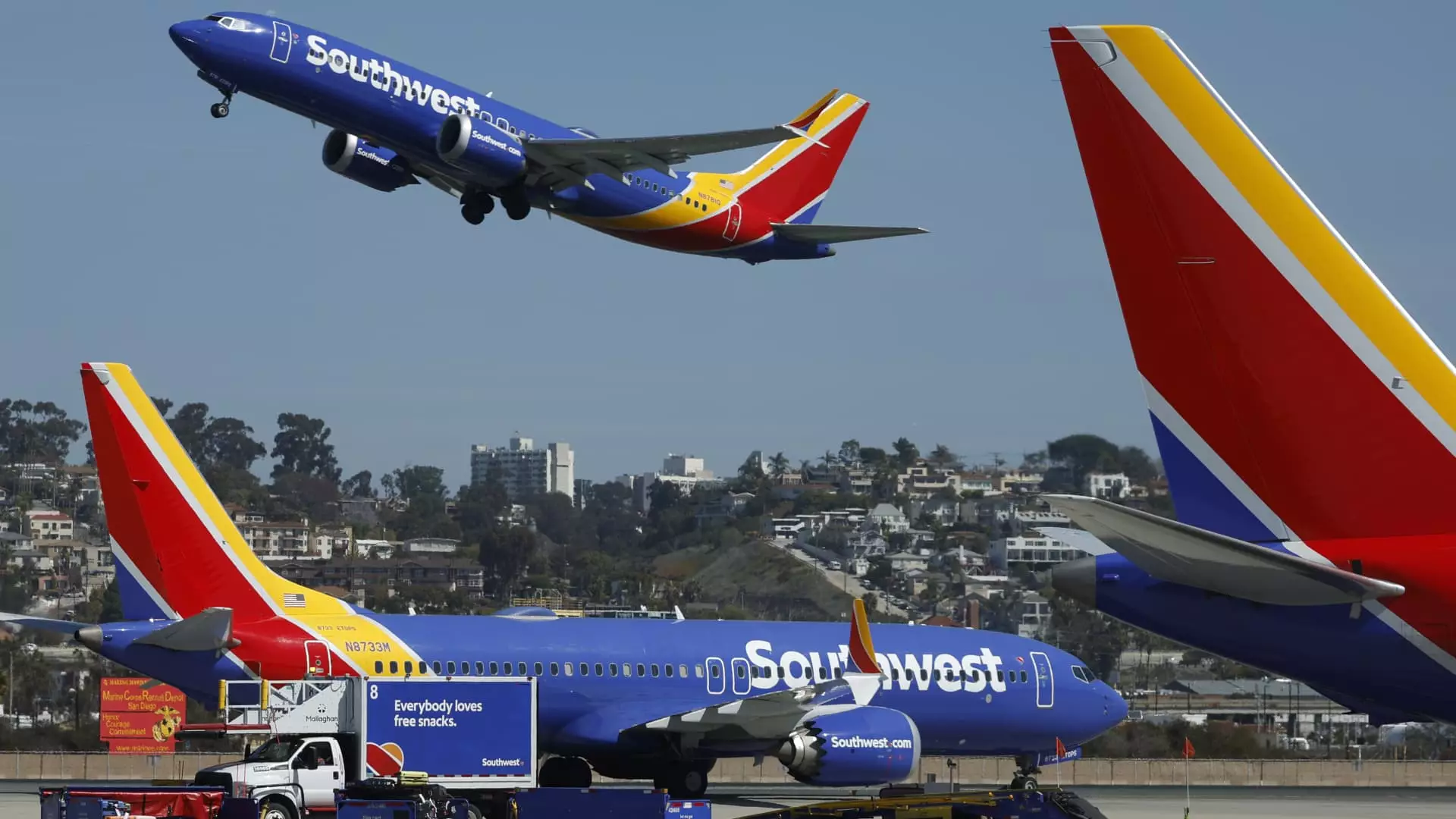Southwest Airlines, a storied name in the aviation industry, has recently found itself at a critical juncture. With CEO Bob Jordan at the helm, the airline has begun contemplating strategies to attract high-spending customers, including the introduction of airport lounges, premium seating, and long-haul international flights. The idea of evolving beyond its low-cost roots showcases a willingness to adapt, but the inherent risks associated with such dramatic shifts cannot be understated. The heartfelt sentiment that has characterized Southwest’s brand for decades may face significant erosion if it fails to manage its transformation properly.
At industry conferences like the one where Jordan spoke, there is palpable excitement about these new directions, yet one must question whether they align with the core principles that have driven Southwest’s success for over half a century. The allure of luxury offerings comes with the risk of alienating loyal customers who chose the airline specifically for its no-frills approach. With competitors like Delta and American Airlines aggressively adding premium capabilities, Southwest’s entry into this arena appears more reactive than visionary.
Changing Company Culture and Identity
For years, Southwest Airlines prided itself on a unique company culture that emphasized open seating and a uniform cabin environment. By considering the implementation of premium options, the airline risks diluting this identity. Open seating might need to be rethought if lounges are introduced and an elite class of passengers emerges. CEO Jordan’s acknowledgment that they could lose customers to rivals highlights a critical tension within the company: the struggle to remain true to its founding ethos while also evolving in response to market pressures.
The very philosophy that defined Southwest as a cost leader, allowing all customers to check two bags for free, is already under strain. This deliberate pivot toward higher-end offerings may initially attract new customers but could potentially disrupt the loyalty of the existing base. Customers who embraced the airline’s original concept may find themselves increasingly alienated, cultivating a sense of distrust regarding the company’s genuine commitment to accessible air travel.
Economic Uncertainty and Pricing Wars
The backdrop of an uncertain economic environment exacerbates these challenges. While Jordan’s statements about seeing dropping fares might ring optimistic, they may also signal deeper issues within the airline industry. The situation reflects a growing trend of increasingly competitive pricing—where costs for air travel continuously fluctuate—often leading to a race to the bottom. Customers accustomed to affordable airfare could quickly turn their backs if they perceive a shift towards premium pricing without a corresponding value upgrade.
Travelers are savvy; they compare prices and services across platforms, often leading to the unwanted specter of abandoning a once-trusted airline for a deal that seems better on paper. This predicament forces Southwest Airlines to balance its aspirations for premium service with the real risk of becoming just another airline in an oversaturated market.
Flight Operations and Future Fleet
The prospect of flying internationally using longer-haul aircraft requires not only a shift in strategic vision but also considerations regarding fleet updates. The reliance on the Boeing 737, a model that has served Southwest well, could hinder its capabilities in competing globally. Although Jordan hinted at future exploration of different aircraft, the logistics and financial investments necessary for these decisions can pose substantial barriers. As of now, the Southwest brand is tethered to a singular model that may not be well suited for transcontinental routes—a potential Achilles’ heel in its ambitions.
In the meantime, delays in aircraft deliveries, particularly of the Boeing 737 Max 7, further complicate the airline’s operational efficiency. While progress has been made concerning consistent deliveries, the uncertainty surrounding the FAA certification process could stymie Southwest’s growth plans. An operational lag can exacerbate investor dissatisfaction, especially amid high expectations for a more lucrative service portfolio.
Marketplace Trends and Customer Expectations
Another nuance to consider is the changing landscape of customer expectations, especially in affluent markets like Nashville, where Jordan noted a higher demand for luxury travel services. However, this raises pertinent questions: Will a profitable high-end service base maintain volume during economic downturns? Is the airline’s current customer base prepared to transition, or are they simply looking for a superior level of service without abandoning their favorite carrier?
Ultimately, understanding and adapting to these dynamics is critical. The delicate balancing act between responding to high-end demands while preserving its integral qualities will define Southwest Airlines’ future success or failure. It is crucial that the airline manages these transitions with sensitivity, ensuring that core values reflect in diversifying offerings. Failing to do so could lead to Southwest Airlines losing its unique place in the hearts of millions of loyal travelers, who see air travel as a necessity, not a luxury.

